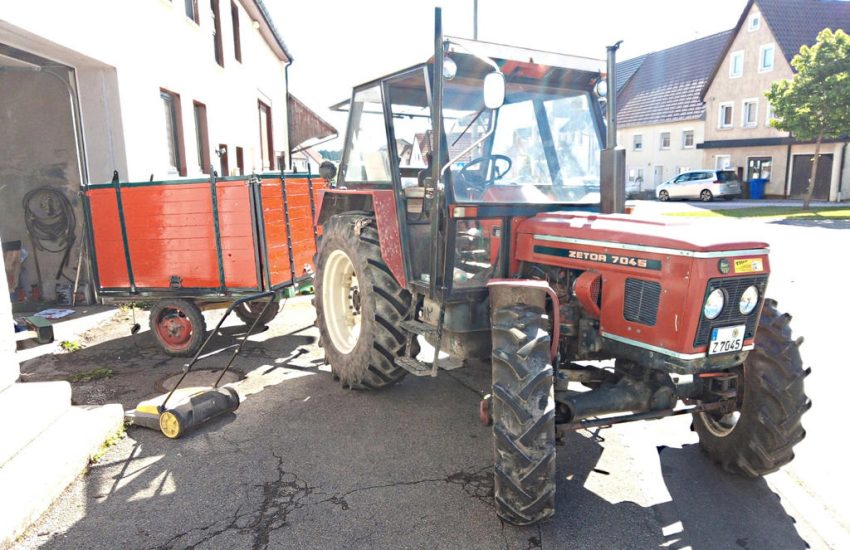Love in a Mist: A Guide to Growing and Caring for Nigella Damascena
Love in a mist, also known as Nigella damascena, is a beautiful flowering plant that belongs to the buttercup family. This plant is native to the Mediterranean region and has been cultivated for its ornamental value since the 16th century. Love in a mist is a hardy annual that produces delicate and intricate flowers in shades of blue, pink, purple, and white.

The name “love in a mist” comes from the appearance of the flowers, which are surrounded by a delicate, lacy bract that gives them a misty, ethereal quality. The flowers themselves are small and star-shaped, with five petals and a central cluster of stamens. Love in a mist is a popular choice for gardeners who want to add a touch of whimsy and romance to their landscapes, and it is often used in cottage gardens, wildflower meadows, and border plantings.
Love in a mist is a relatively easy plant to grow, and it thrives in full sun to partial shade and well-drained soil. It is also drought-tolerant and can withstand some neglect, making it a great choice for beginner gardeners. In addition to its ornamental value, love in a mist has been used in traditional medicine for its anti-inflammatory and analgesic properties. Overall, love in a mist is a charming and versatile plant that adds beauty and interest to any garden.
Overview of Love in a Mist

Love in a Mist, also known as Nigella or Nigella damascena, is a member of the buttercup family, Ranunculaceae. It is a popular ornamental plant that is commonly found in cottage gardens and is often used in floral arrangements. This section provides an overview of Love in a Mist, including its botanical profile, cultural significance, and geographical origin.
Botanical Profile
Love in a Mist is an annual herb that grows up to 20-50 cm in height. It has finely divided, feathery leaves and produces delicate, blue, pink, or white flowers that are surrounded by a ring of thread-like bracts. The flowers are followed by distinctive inflated seed pods that are often used in dried flower arrangements.
Cultural Significance
Love in a Mist has been cultivated for centuries for its ornamental value. It is believed to have originated in North Africa and Southern Europe and has since been introduced to many other regions, including Europe, Asia, and the Mediterranean. In some cultures, Love in a Mist is associated with love and is used in wedding bouquets and decorations.
Geographical Origin
Love in a Mist is native to North Africa and Southern Europe. It is believed to have been introduced to other regions by traders and travelers. Today, it is widely cultivated as an ornamental plant in many parts of the world and is a popular addition to cottage gardens and floral arrangements.
In conclusion, Love in a Mist is a beautiful and popular ornamental plant that is widely cultivated for its delicate flowers and distinctive seed pods. Its cultural significance and geographical origin make it a fascinating addition to any garden or floral arrangement.
Cultivation
Growth Requirements
Love in a mist is an annual plant that grows best during the spring and summer months. It prefers full sun or partial shade and fertile, well-drained soil. Sandy soil, loam, and clay-loam are all suitable for growing love in a mist. The ideal soil temperature for germination is between 60-70°F.
Planting and Propagation
Love in a mist can be sown directly into the ground in the spring or started indoors in pots for transplanting. Direct-sown seeds should be planted 1/4 inch deep and spaced 6-8 inches apart. Germination typically takes 7-14 days. When transplanting, seedlings should be spaced 12-15 inches apart.
Maintenance and Care
Love in a mist requires regular watering, especially during hot and dry weather. Deadheading spent flowers can encourage more blooms. Fertilizer can be applied in the spring and summer to promote growth and flowering.
Harvesting and Post-Care
Love in a mist can be harvested for its cut flowers or for its seed pods. When harvesting for cut flowers, it’s best to pick them early in the morning and place them in water immediately. When harvesting for seed pods, allow the pods to dry on the plant before collecting them. After harvesting, the plant can be cut back to encourage new growth.
Pests and Problems
Love in a mist is generally not prone to disease, but it can be susceptible to aphids and spider mites. These pests can be controlled with insecticidal soap or neem oil. It’s important to note that love in a mist contains a toxic alkaloid and should not be ingested.
Varieties and Cultivars

Love in a mist, or Nigella damascena, is a popular annual flowering plant that is native to southern Europe, North Africa, and southwest Asia. There are several varieties and cultivars available, each with unique characteristics and features.
Traditional Varieties
The traditional varieties of love in a mist include Miss Jekyll, Miss Jekyll Alba, Persian Jewels, Albion, Blue Midget, Cambridge Blue, Mulberry Rose, Oxford Blue, and Dwarf Moody Blue. These varieties are known for their delicate, fern-like foliage and attractive blue flowers.
Modern Cultivars
In recent years, several modern cultivars of love in a mist have been developed that offer a wider range of colors and forms. Some of the popular modern cultivars include White, Pink, Blue, Lavender, and Purples. These cultivars come in vivid blue-blossom and double flower forms, making them a popular choice for gardeners.
Color and Form Variations
Love in a mist is available in a wide range of colors, including white, pink, blue, and lavender. The flowers come in various shades of blue, ranging from pale blue to deep violet-blue. Some cultivars also feature double flowers, which have an extra layer of petals that give them a fuller appearance.
Overall, love in a mist is a versatile and attractive flowering plant that is easy to grow and care for. With its delicate foliage and beautiful blooms, it is a popular choice for gardeners looking to add color and interest to their gardens.
Garden Design and Aesthetics

Landscape Uses
Love in a Mist (Nigella damascena) is a versatile plant that can be used in a variety of landscape settings. It is an ideal choice for cottage gardens, wildflower gardens, and meadow gardens. It can also be used as a border plant, edging, or to fill in gaps in a flower bed. Love in a Mist is particularly effective when planted in groups, as it creates a striking display of color and texture.
Companion Planting
Love in a Mist can be paired with a wide range of plants to create a beautiful and harmonious display. It looks particularly stunning when planted with spring bulbs, such as daffodils and tulips. It also pairs well with other perennials and annual flowers, such as cosmos, zinnias, and snapdragons. Love in a Mist can be used to provide contrast to other plants, or to create a succession planting scheme.
Foliage and Flower Display
Love in a Mist is prized for its delicate, airy bracts that surround the flowers. The bracts come in a range of colors, including blue, pink, white, and purple. The flowers themselves are small and delicate, with prominent stamens and sepals. The fennel-like foliage is also attractive, with an upright growth habit that makes it ideal for cutting flowers. Love in a Mist is best grown in full sun, where it will produce the most striking display of flowers and foliage.
Propagation and Breeding
Seed Collection and Storage
Love in a mist is a self-seeding annual plant, which means it has the ability to reseed itself without any help. However, if you want to save the seeds for future planting, it is important to collect them at the right time. The seed pods of love in a mist should be harvested when they turn brown and start to split open. The seeds can then be removed and dried in a cool, dry place for a few days before storing them in airtight containers.
Breeding New Varieties
Love in a mist can be easily propagated from seed, making it a great choice for gardeners who want to experiment with breeding new varieties. Cross-pollination and hybridization are two methods that can be used to create new and unique love in a mist varieties.
Cross-pollination involves manually transferring pollen from one flower to another. This can be done by using a small brush or by simply removing the petals from one flower and pressing it against the stigma of another. Hybridization, on the other hand, involves crossing two different species or varieties to create a new hybrid.
When breeding new varieties of love in a mist, it is important to keep in mind that it may take several generations to achieve the desired traits. It is also important to keep accurate records of the parent plants and the characteristics of the offspring to track the progress of the breeding program.
Overall, love in a mist is a versatile and easy-to-grow plant that is perfect for gardeners who want to experiment with breeding new varieties. With a little patience and some careful planning, it is possible to create unique and beautiful love in a mist varieties that will add color and interest to any garden.
Practical Uses and Applications

As Cut Flowers
Love in a mist flowers, with their delicate, fern-like foliage and unique, papery blooms, make for a striking addition to any floral arrangement. They are commonly used as cut flowers in bouquets, centerpieces, and other decorative displays. The flowers come in a range of colors, including blue, pink, white, and purple, making them a versatile choice for any occasion.
When using love in a mist as cut flowers, it is important to cut the stems at an angle and place them in a vase with fresh water. The flowers will last for up to a week if the water is changed every other day and the vase is kept in a cool, shaded area.
Culinary and Medicinal
Love in a mist seeds, also known as black cumin or N. sativa, have been used for centuries in traditional medicine and culinary applications. The seeds are rich in antioxidants, vitamins, and minerals, and are believed to have a range of health benefits, including improving digestion, boosting the immune system, and reducing inflammation.
In culinary applications, love in a mist seeds are often used as a spice in Middle Eastern and Indian cuisine. They have a slightly bitter, nutty flavor and are commonly used in breads, curries, and other savory dishes. The seeds can also be used to make a flavorful tea or infused oil.
When harvesting love in a mist seeds, it is important to wait until the seed pods have turned brown and begun to dry out. The pods can then be opened and the seeds removed and stored in an airtight container.
Overall, love in a mist is a versatile and beautiful plant with a range of practical uses and applications. Whether used as cut flowers or in culinary and medicinal preparations, this unique and striking plant is sure to add a touch of beauty and flavor to any situation.
Environmental Impact and Sustainability

Ecological Considerations
Love in a mist is an annual plant that is commonly grown in gardens. It is known for its delicate blue flowers and unique seed pods. While this plant is not considered invasive, it does have the potential to self-sow and spread beyond its intended area. It is important to monitor the plant and prevent it from spreading to natural areas where it could outcompete native species.
Love in a mist is not known to have any significant negative impact on the environment. It does not attract pests or diseases and is not harmful to wildlife. However, it is important to avoid using pesticides or herbicides on this plant as it could harm beneficial insects and other wildlife.
Sustainable Gardening Practices
Love in a mist is an easy to grow plant that can thrive in well-drained soil. It is important to choose a location that receives full sun to partial shade for optimal growth. When planting love in a mist, it is recommended to space the plants at least two feet apart to prevent overcrowding.
To promote sustainability, gardeners can collect the seed pods from their love in a mist plants and save them for future planting. This can help reduce the need for purchasing new seeds and promote self-sustaining gardens. Additionally, avoiding the use of chemical fertilizers and opting for organic alternatives can help reduce the environmental impact of growing love in a mist.
Overall, love in a mist is a beautiful and easy to grow plant that can be incorporated into sustainable gardening practices. By monitoring its growth and avoiding the use of harmful chemicals, gardeners can enjoy the beauty of this plant without negatively impacting the environment.
Cultural and Artistic Inspirations

Symbolism and Folklore
Love in a mist, also known as Nigella damascena, has been a popular ornamental plant for centuries, and it has been associated with various cultural and symbolic meanings. In some cultures, it is believed that the plant has the power to ward off evil spirits and protect against the evil eye. In ancient times, it was also believed to have healing properties and was used in traditional medicine to treat various ailments.
In folklore, love in a mist is often associated with love and romance. It is said that if a person wears a garland of love in a mist, they will find true love. The flower’s delicate, lacy appearance is also said to represent the veil of a bride, making it a popular choice for wedding bouquets and decorations.
Art and Literature
Love in a mist has also been a popular subject in art and literature. The delicate blue flowers and intricate foliage make it a beautiful and intriguing subject for artists and poets alike.
In art, love in a mist has been depicted in various mediums, including paintings, drawings, and prints. One notable example is the painting “Love-in-a-Mist” by British artist William Nicholson, which features a close-up view of the flower’s intricate structure.
In literature, love in a mist has been referenced in various works of poetry and prose. For example, in the poem “The Garden” by Andrew Marvell, the flower is described as “love in idleness,” a symbol of the fleeting nature of love and desire.
Overall, love in a mist’s cultural and artistic significance is a testament to its enduring beauty and charm, which continues to captivate people today.
Tips and Tricks for Gardeners
Best Practices for Growing
Love in a mist is an annual flowering plant that is easy to grow and self-sows readily. It thrives in full sun to partial shade and prefers fertile, well-drained soil. Here are some best practices for growing love in a mist:
- Plant the seeds in early spring, as soon as the soil can be worked.
- Sow the seeds directly into the garden bed, as they do not transplant well.
- Space the seeds 6-12 inches apart, depending on the variety.
- Water the seeds regularly, keeping the soil moist but not waterlogged.
- Once the plants reach a height of 4-6 inches, thin them to 6-12 inches apart.
- Mulch around the plants to help retain moisture and suppress weeds.
- Deadhead the spent flowers to encourage more blooms.
- If you want to save the seeds for next year, allow the seed pods to dry on the plant before harvesting.
Troubleshooting Common Issues
Love in a mist is generally pest and disease-resistant, but it can still encounter some issues. Here are some common problems and their solutions:
- Pests: Aphids and spider mites can sometimes infest love in a mist. To control them, spray the plants with a strong jet of water or use insecticidal soap.
- Disease: Powdery mildew can be a problem in humid conditions. To prevent it, water the plants at the base and avoid wetting the foliage. If powdery mildew does appear, remove the affected leaves and spray the plants with a fungicide.
- Watering: Love in a mist prefers evenly moist soil, but it can be susceptible to root rot if the soil is too wet. To avoid over-watering, allow the top inch of soil to dry out before watering again.
By following these tips and tricks, gardeners can enjoy a beautiful display of love in a mist in their gardens.
Frequently Asked Questions
What are the ideal growing conditions for Love-in-a-Mist?
Love-in-a-Mist grows best in full sun to partial shade and well-drained soil. It can tolerate a wide range of soil types, but prefers a slightly acidic soil pH of around 6.0 to 7.0. It is also important to keep the soil moist but not waterlogged.
Can Love-in-a-Mist be used for medicinal purposes, and if so, what are they?
Yes, Love-in-a-Mist has been used for medicinal purposes for centuries. The seeds and leaves of the plant have been used to treat various ailments, including digestive problems, respiratory infections, and skin irritations. However, it is important to note that the plant should not be consumed without consulting a healthcare professional first.
Is Love-in-a-Mist considered an annual or a perennial plant?
Love-in-a-Mist is an annual plant, which means that it completes its life cycle in one growing season. However, it often self-seeds, which means that it may come back the following year without the need for replanting.
How should Love-in-a-Mist be spaced when planting for optimal growth?
Love-in-a-Mist should be spaced about 6 to 12 inches apart when planting. This will provide enough room for the plants to grow and spread out without overcrowding each other.
Are there any specific companion plants recommended for Love-in-a-Mist?
Love-in-a-Mist pairs well with a variety of plants, including roses, lavender, and poppies. It is also a great companion plant for vegetables such as tomatoes, peppers, and cucumbers, as it can help deter pests and attract beneficial insects.
Can parts of the Love-in-a-Mist plant be safely consumed, and how are they used in cooking?
Yes, the seeds and leaves of the Love-in-a-Mist plant are edible and can be used in cooking. The seeds have a slightly nutty flavor and can be used in baking or as a substitute for poppy seeds. The leaves can be used in salads or as a garnish for dishes. However, it is important to only consume parts of the plant that have been grown organically and have not been treated with pesticides.


